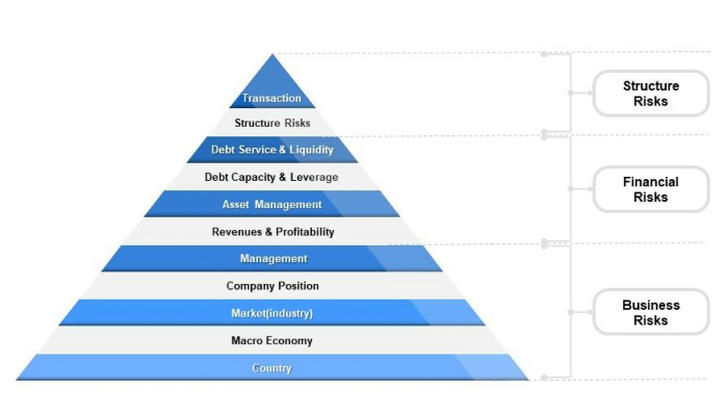Credit Risk Management in Commercial Banks: A Study on Credit Card Risks

Credit risk is one of the most significant risks that commercial banks face, particularly in the context of credit card operations. Credit cards, as a form of unsecured lending, expose banks to the risk that borrowers may fail to repay their debt. This risk is compounded by the high levels of revolving debt, the ease of access to credit, and the diversity of borrowers' financial profiles. Effective credit risk management is essential for maintaining the profitability, stability, and long-term sustainability of commercial banks. This article explores the nature of credit risk in credit card operations, the strategies and tools used by commercial banks to manage this risk, and the challenges they face in today’s dynamic financial environment.
The Nature of Credit Risk in Credit Card Operations
Credit risk in the context of credit card operations refers to the risk that a borrower may default on their credit card payments, failing to repay the borrowed amount either in part or in full. Since credit card loans are typically unsecured, the risk to the lender is high, and the bank is left to absorb the loss if the borrower defaults.

Several factors contribute to credit risk in credit card lending: 1.Creditworthiness of Borrowers One of the primary drivers of credit risk is the creditworthiness of the cardholder. Banks assess creditworthiness through credit scores, which are derived from a variety of factors such as income, credit history, outstanding debt, and employment status. Borrowers with poor credit histories or high levels of existing debt are more likely to default. 2.Behavioral Risk Behavioral risk refers to how a borrower uses their credit card. This includes the frequency of card usage, the amount of debt accumulated, and the repayment pattern. Borrowers who consistently carry high balances and make only minimum payments are at greater risk of default. In contrast, those who pay their balance in full each month are considered less risky. 3.Economic and Market Conditions Economic conditions, such as recessions or periods of high unemployment, can significantly impact borrowers' ability to repay their credit card debt. In times of economic downturn, many borrowers face financial difficulties, leading to higher default rates. Similarly, fluctuating interest rates can also increase the financial burden on borrowers with variable-rate credit cards, exacerbating the risk of default. 4.Credit Card Terms and Conditions The terms and conditions of credit card offerings also contribute to credit risk. Higher credit limits, low introductory interest rates, and long repayment periods can encourage customers to accumulate more debt, potentially increasing the risk of default. Additionally, if a bank offers unsecured credit cards to individuals with low credit scores, the default risk is higher due to the lack of collateral.
Credit Risk Management Strategies in Commercial Banks
To manage credit risk in credit card operations, commercial banks employ a range of strategies, including the use of advanced analytics, monitoring systems, and regulatory measures. These strategies aim to reduce the probability of default, mitigate losses when defaults occur, and ensure the long-term viability of the bank’s credit card portfolio.

1.Credit Risk Assessment and Scoring Models The first step in managing credit risk is evaluating the creditworthiness of potential cardholders. Most commercial banks use a credit scoring system that evaluates the borrower’s ability and likelihood to repay. •Credit Scoring Models: Banks often rely on credit scoring models such as FICO or VantageScore, which evaluate a borrower's credit history, current debt, income, and other financial factors. These scores are used to assess the risk of extending credit to an individual. •Alternative Data: In recent years, banks have started using alternative data sources (e.g., utility bills, rental payments, and social media activity) to assess borrowers with limited credit histories. This helps banks to reach a broader range of customers while managing risk. 2.Risk-Based Pricing Risk-based pricing refers to the practice of adjusting interest rates, fees, and credit limits based on the borrower’s risk profile. For example, borrowers with higher credit scores and a lower risk of default are offered lower interest rates and higher credit limits, while higher-risk borrowers may face higher interest rates, fees, and more stringent borrowing limits. •Interest Rates: Credit cards are often marketed with an initial low interest rate or a 0% introductory APR for new purchases. However, risk-based pricing allows banks to adjust these rates based on the customer’s credit score and behavior, ensuring that high-risk borrowers contribute to covering the higher costs associated with their credit risk. •Credit Limits: Banks also use risk-based pricing to determine appropriate credit limits. Higher-risk customers may be offered lower limits or more restrictive terms to reduce the exposure to default. 3.Credit Card Monitoring and Early Warning Systems Once a credit card is issued, the next step in credit risk management is ongoing monitoring of cardholder activity. Banks use a variety of tools to track credit card usage, repayment patterns, and changes in the borrower’s financial situation. These monitoring systems can help detect early signs of financial distress, allowing the bank to intervene before a default occurs. •Account Monitoring Systems: Banks monitor cardholder behavior, including payment histories, utilization rates, and signs of credit deterioration (e.g., late payments, increasing debt). High levels of credit card usage or irregular payment patterns can signal an increased risk of default, triggering proactive measures. •Early Intervention: Early warning systems help banks detect at-risk customers and intervene with measures such as offering payment restructuring, reducing credit limits, or negotiating lower interest rates. These interventions can prevent defaults and reduce overall credit risk. 4.Debt Collection and Recovery Strategies Even with proactive monitoring and early intervention, some credit card holders will inevitably default. In these cases, effective debt collection and recovery strategies are essential to minimize losses. •Collections Teams: Banks employ collections teams that specialize in recovering debt from defaulted borrowers. These teams typically use a mix of direct communication (e.g., phone calls, letters) and third-party debt collection agencies to recover outstanding balances. •Write-offs and Charge-offs: If a borrower’s debt becomes uncollectible, banks may choose to write off or charge off the amount as a loss. However, before reaching this point, the bank may attempt to recover part of the outstanding debt by offering settlement deals or negotiating reduced payments. 5.Portfolio Diversification and Credit Risk Hedging Banks often use portfolio diversification to manage risk across a wide range of credit card products. By offering a variety of credit card products to different customer segments, banks can balance the risk across their portfolio. •Credit Card Segmentation: Commercial banks may segment their credit card portfolios into different categories based on customer risk levels. For example, they may offer secured cards to high-risk borrowers and premium cards with greater rewards to low-risk customers. •Credit Default Swaps (CDS): Some banks hedge credit risk by purchasing credit default swaps (CDS) or other insurance products that protect against borrower defaults. This allows the bank to offset potential losses caused by defaults, though it comes at an additional cost.
Challenges in Credit Card Credit Risk Management
While commercial banks have developed robust frameworks to manage credit risk in credit card operations, several challenges continue to arise, particularly in an increasingly complex and unpredictable economic environment.

1.Economic Uncertainty Economic downturns, changes in interest rates, and periods of financial instability can increase the likelihood of credit card defaults. In times of financial hardship, borrowers may prioritize other debts, such as mortgages or auto loans, over credit card payments, raising the default rate. 2.Consumer Behavior Changes Consumer behavior in the digital age has changed significantly, with an increasing number of people relying on credit cards for everyday purchases. This shift has raised concerns about the growing levels of consumer debt and the impact on credit card delinquency rates. •FinTech and Alternative Lenders: The rise of fintech companies and alternative lenders has also made it easier for consumers to access credit, which can increase the potential for over-leveraging and defaults. Banks must adapt their credit risk models to account for this new competitive environment. 3.Regulatory Challenges Regulatory frameworks regarding credit card lending have become more stringent in many jurisdictions. Governments and regulatory bodies are increasingly focused on protecting consumers from excessive debt and predatory lending practices. While these regulations protect consumers, they also increase the complexity and cost of managing credit risk. •Regulatory Compliance: Banks must ensure compliance with regulations such as the CARD Act in the U.S. and other consumer protection laws, which can limit how they structure credit products and manage risk. Non-compliance can lead to penalties, reputational damage, and legal challenges. 4.Technological Advancements The increasing use of artificial intelligence (AI) and machine learning (ML) in credit risk management presents both opportunities and challenges. While these technologies can help banks develop more accurate credit scoring models and predictive analytics, they also require substantial investments in technology infrastructure and expertise.
Conclusion
Credit risk management in commercial banks, particularly in credit card operations, is a complex and critical aspect of ensuring financial stability. Banks must balance their desire for profitability with the need to minimize the risks associated with credit card lending. By utilizing a combination of credit scoring models, risk-based pricing, monitoring systems, and effective collections strategies, commercial banks can manage credit risk effectively.

However, challenges such as economic volatility, changing consumer behavior, regulatory constraints, and technological advancements require ongoing adaptation and innovation in credit risk management practices. Banks that can navigate these challenges effectively will be well-positioned to maintain profitability while safeguarding their long-term sustainability in the credit card market.
